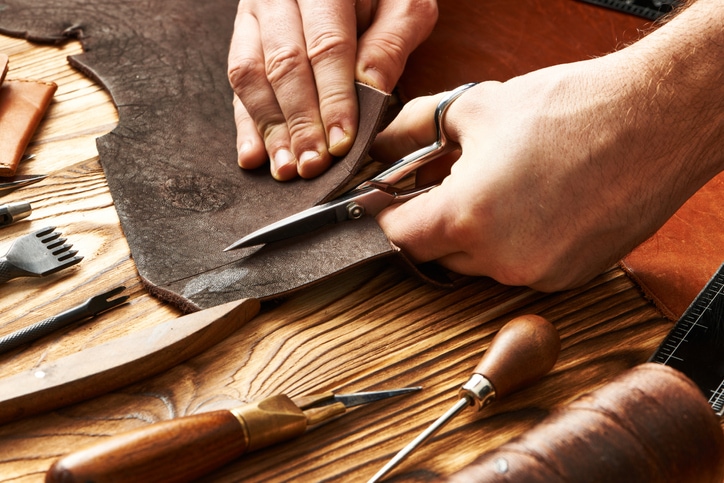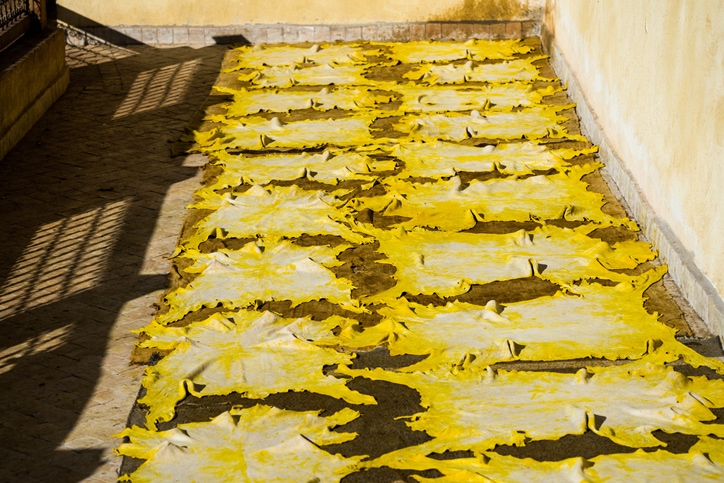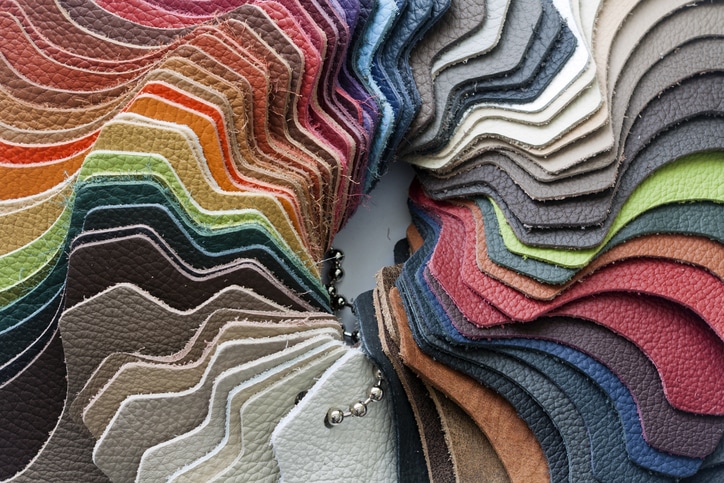Our fashion sense, the clothes we wear, have a profound impact on how others perceive us. We all know it’s true. From the kooky librarian wearing fun chunky earrings with her colourful dress, to the sophisticated businessman in a tailored suit and designer shoes – outfits are essentially archetypes for the person that we want the world to think we are. When it comes to accessorizing, jackets and shoes have a profound effect on the overall look and vibe of an outfit. While there a ton of materials you can choose from to craft the perfect outfit, leather reigns supreme and will earn you all of the style points! Have you ever seen someone in a leather jacket get pushed around? Leather commands respect. Whether it’s the polished leather purse you wear over your shoulder to the ladies lunch, the strappy leather heels that are known to make your formalwear pop, or the vintage leather jacket that gives you the edge you’re looking for – we truly understand the role that your leather items play in your self-image. However, with a closet full of classic leather pieces, have you ever thought about where that leather comes from and how it’s made?
The process of making the leather that you love to wear so much is quite in-depth and interesting. So without further ado, here’s every step that gets taken in the process of making leather:

Sourcing the Raw Materials
As we all know, leather comes from animals. Leather can be sourced and made from the hide of almost any animal, but is most commonly from:
- Cows
- Pigs
- Sheep
- Goats
- Crocodiles
In order to yield the hide, firstly, the skin must be removed. Secondly, the flesh needs to be removed by hand or through the power of a fleshing machine.
After this, the hide must be transported to the salting process in order to stop the decomposing process from taking place. While some people choose to put their hide in a salty brine, others merely rub salt into it. Post-salting, the hides get stored and folded until it is time for them to be processed.
Another soaking that can take place during the production of leather is the lime bath. The lime bath is a one to two-day bathing process that exists to soften the hide and remove any hair using calcium oxide.
Once the bathing process is done, hides swell due to moisture (around 4mm thick), and then they need to be spliced into two layers in order to separate the different types of hide used for different types of leather, such as:
- The Upper Layer: The upper layer of hide has a tight fibre structure that allows it to be more durable and produce the finest leather.
- The Bottom Later: The bottom layer of the hide is often used for purses and shoes.
-
Tanning
After the raw materials have been prepared, it’s time to tan! The tanning process is what transforms hides into leather by preserving the material.
The steps to effectively tan hides are as follows:
- First: Load hides into the tanning drum that contains a chromium salt mix or vegetable tanning solutions.
- Second: The liquoring process begins when fats are added to the leather to increase strength and softness.
- Third: Hides are passed through rollers to remove any remaining moisture.
- Fourth: Hides are then inspected for flaws and shaved to a specific width.

-
Re-Tanning
So the tanning process is finished, and now it’s time to begin the re-tanning process that ensures the leather is almost ready to be made into its final form!
After completing the tanning process all over again, the hides are then vacuum or air-dried. Furthermore, the hides can be bleached to help provide a base to begin the dyeing stage.
-
Dyeing
Ever wonder how your favourite leather items get the colour you love so much? This can all be attributed to the dyeing process. From the classic earth tones, to vibrant hues, leather can be dyed almost any colour! After being dyed, the hides must be rinsed and dried.

-
Finishing
The final stage of the leather-making process is called finishing. During the finishing process, leather is worked to promote a healthy appearance and flexibility within it. That leathery shine you know and love wouldn’t be possible if the leather wasn’t finished beforehand!
One major player in the finishing process is the staker, a machine that both stretches the leather to tighten the pore structure of it, and also applies oils to lubricate it! Add on the final finishing spray, and the leather is good to go!
At Love your Leather, we understand the importance of ensuring your leather always looks as good as new. We offer leather cleaning services as well as leather repair in Toronto and Southern Ontario. Call today to get your free quote!